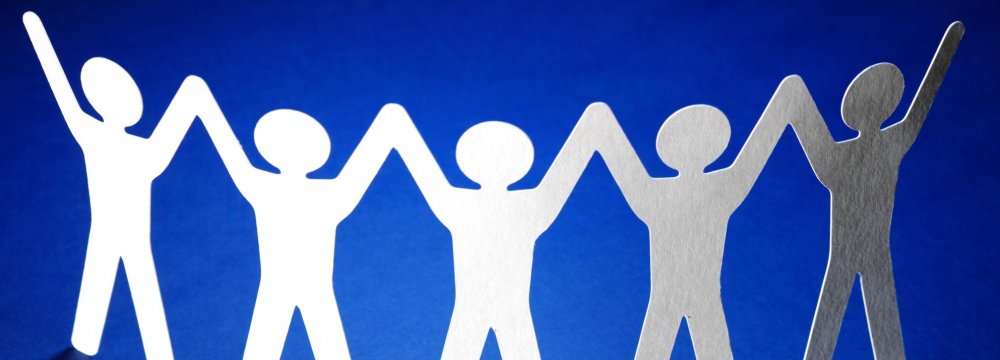The State Welfare Organization (SWO) has decided to revive the therapeutic community (TC) method of addiction treatment despite their high costs, to address the worsening problem of drug addiction and the ensuing social harms.
Social experts say the current procedures for addiction treatment have not been successful since relapse occurs in 90% of the cases that undergo the treatment presently offered at drug rehab camps and methadone maintenance therapy (MMT) centers.
Every month, more than $125 (5 million rials) is spent on treatment of each drug addict at the camps and MMT centers. Many undergo long but unsuccessful and ineffective treatment cycles, and the rate of relapse following rehabilitation is very high, IRNA reported.
Unlike the compulsory drug camps which offer free-of-charge services to homeless addicts rounded up by police and sent for rehab, MMT centers and private drug camps charge drug addicts and their families’ large sums of money for the services they offer.
The permits for MMT centers are issued by the government-funded Shahid Beheshti University of Medical Sciences in Tehran, which also provides bottles of methadone to MMT centers free of cost that can be sold by the centers to the addicts.
Several officials at the SWO have also expressed dissatisfaction with the functioning of the current drug addiction treatment camps. According to SWO figures released recently, on average each rehabilitated addict goes back for treatment 11 times. Therefore, it can be said the camps have failed in their tasks and at the same time imposed heavy financial burden on the government.
More than a decade and half ago, the SWO had established TC addiction centers across the country. The intensive and comprehensive treatment method is developed for use in adults to treat substance use disorders.
Unfortunately, the TC centers were short-lived since most of them were closed due to the high costs, although it was found to be successful. Besides, there was lack of proper support from government and insurance organizations.
But now, SWO officials have decided to revive the centers and increase their number despite the costly method.
“We are planning to establish more TC centers and increase subsidy for the existing ones as well as provide insurance coverage,” said Mohsen Roshan Pazhouh, SWO deputy of addiction prevention and treatment.
Concept and Goal
The concept of TC originated in 1958 in the US at a time when social experts in the country realized that other systems of therapy were not successful in treating substance abuse disorders.
The core goal of TC is to promote a more holistic lifestyle and identify areas for change such as negative personal behaviors (social, psychological and emotional) that can lead to substance use.
In this treatment method, peer pressure is used as an integral and important therapeutic technique. Education, medical and mental services, family therapy, and vocational services are among the other important components of the program.
As a social-psychological form of treatment, TC method has a characteristic which is the use of the community as a therapist and teacher in treatment process. The community includes the social environment, peers, and staff role models.
Rounded Up for Rehab
Since the beginning of the current year that ends in March, 11,000 addicts were rounded up in three raids and sent to rehab shelters in Tehran Province. The capacity of the provincial rehab shelters which was only 400 in 2013 has now increased to 8,600, of which 4,500 were established by private institutions and NGOs working in the field. The remaining 4,100 are state-run.
There are more than two million drug users in the country of whom 10% are women. Currently, 20% of the workforce and 2.6% of university students are plagued by addiction, according to Alireza Jazini, deputy secretary general of Iran Drug Control Headquarters (IDCH).
Also, drug addicts account for 40% of minor criminal activities such as drug peddling, pick-pocketing and petty thefts, and therefore can create insecurity in the community.
Drug abuse is the cause of 80% of sexual assaults, 62% of street brawls, 50% of divorces, 50% of spouse abuse cases, 42% of murders, and 34% child abuse, according to Mohammad Ali Nosrati, secretary of the Coordination Council to Fight Drugs in East Azarbaijan Province.
Change in the pattern of drug use with a preference for industrial drugs has made combating the menace more challenging. Around 5% to 7% of addicts use two or more kinds of drugs at the same time. The rate of meth abuse has also increased from 3% in 2011 to 26% in 2016.
“However, this year more people have turned to hash drugs instead of meth,” says Parviz Afshar, spokesman of the IDCH.
There are also 60,000 homeless addicts who constitute 5% of all drug addicts.
In Tehran alone, there are 16,000 homeless addicts and during the first nine months of the current year, more than 1,500 homeless addicts were rounded up and sent to 24 rehab centers. A 21% increase in overall drug confiscations was reported by Iran’s anti-narcotics police in the same period in Tehran Province, (the corresponding figure in the previous year was 13%).
The pattern of seizures and drug abuse is due largely to the rising opium cultivation in Afghanistan, which shares a 936-km porous border with Iran. Iranian authorities seize about 30% of the estimated 155 tons of heroin and opium entering the country each year that is largely destined for the western countries.
The SWO has launched a Drug Abuse Hotline to help addicts and their families. The hotline provides counseling services and referrals to rehabilitation centers.






Add new comment
Read our comment policy before posting your viewpoints